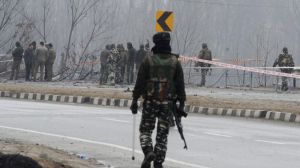Power will soon have a protector from the skies
Relief from power failures may soon come from the skies. In an attempt to counter the crippling effect of unannounced tripping along the tra...

Relief from power failures may soon come from the skies. In an attempt to counter the crippling effect of unannounced tripping along the transmission network, efforts are on to rope in helicopters for aerial maintenance.
The Power Grid Corporation of India and Pawan Hans Helicopters Ltd are giving the finishing touches to an agreement that provides for maintenance of transmission lines with the help of choppers.
To begin with, this ambitious project involves removing polluting material — largely dust particles and bird droppings — that get deposited on insulators atop transmission poles along the northern power grid.
As the moisture content in the air increases, particularly during winters, these pollutants settle into insulators, resulting in what is commonly referred to as tripping. The problem, according to officials, is acute in winter months along the northern power grid, causing unannounced blackouts in cities across North India including the Capital.
The existing method of maintenance requires periodic cleaning of these insulators throughout the year, which necessitates turning off the power supply and is quite time consuming. Specially equipped helicopters, as has been proposed, could facilitate this cleaning, as has been found in many developed countries.
The method is simple. A chopper with a water-filled tank in its belly is used. The water is usually treated with a range of chemicals to make the cleansing more effective.
The chopper hovers along the transmission lines, spraying this specially-treated water on the insulators. Known as ‘‘hot line washing’’, this method does not require the power supply to be turned off and has apparently proved extremely successful in several countries. Moreover, it helps reduce transmission costs that have been a persistent concern of the power sector.
The problem, however, is that there are no such choppers in India. More importantly, there are no trained pilots with the mandatory certification to carry out this specialised task. So initially, international companies will be invited, through Pawan Hans, for the job. Plans are afoot to ensure on-the-job training of Pawan Hans pilots in the first few months.
Once Pawan Hans has its own trained and certified pilots, Managing Director N.V. Sridhar said the company could get the specially-designed choppers needed for this exercise. With a layout of over 40,000-km transmission network — one of the largest in the world — Power Grid Corporation of India could regularise aerial maintenance on a permanent basis, making it cost-effective in the long run.
While the actual cost factor will only be clear after the bids arrive, sources said an estimate would fix a monthly charge of Rs 25 lakh per helicopter. Since chopper operators charge according to the number of flying hours, the Power Grid Corporation will have to cough up an extra Rs 25,000-30,000 per hour, apart from the monthly charges.
Describing the job ahead as a challenging task, Sridhar said: ‘‘We are in an advanced stage of finalising this. It is a positive step that could be of immense help to the power sector in the future. In the process, we can find new innovative ways of using helicopters in our country.’’
Photos





- 01
- 02
- 03
- 04
- 05


























